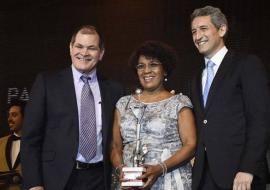16th Habano Festival’s International Seminar Underway

“2013 was a year of good outcomes for Habanos S.A., despite the economic crisis and the antismoking legislations. Our share of the premium cigar market remains strong, with over 70 percent of the total in terms of units and 80 percent as far as values are concerned,” said Jorge Luis Fernandez Maique, deputy president Marketing for Habanos S.A. during the opening of the 16th Habano Festival’s International Seminar.
Three of the brands sold by the company engulfed 62 percent of all sales and 48 percent of the values. Cohiba topped that list, followed by Montecristo and Romeo y Julieta.
In the case of the factory vitolas, the top three were Robustos, Marebas and Petit Coronas, while in the realm of store vitolas, the leaders were Series D No.4, Siglo VI and Siglo II, he went on to say.
Mr. Fernandez Maique explained that 14 countries account for 70 percent of all sales, with Spain still leading the pack and dogged closely by France, China, Germany, Switzerland and Cuba in that same order.
“In retail sales, the Casas del Habano franchises continue to play a major role as sale outlets. The year 2013 closes with little more than 160 of those stores and a total sale surface of 16,000 square meters in all. The number of Habano Specialists last year peaked 640 stores around the globe,” he added.
During the opening of the 16th Habano Festival’s International Seminar, Mr. Fernandez Maique underscored that in the course of 2013 Habanos S.A. raked in $447 million worth of revenue, up 8 percent from the previous year. “If we bear in mind that growth estimates for luxury item sector were barely 2 percent last year, then our numbers are significantly higher,” he pointed out.
As to what the future holds, he said he was really upbeat about it. “This positive trend in habano sales around the world will remain and we’ll continue to grow in a discreet way in both units and revenues. Business volumes will go up as well. But to achieve all that, we must keep on buttressing the development of emerging markets, such as Asia, the Pacific Rim, the Middle East and the Americas, let alone reap bigger results and support out of our traditional markets,” he concluded.










